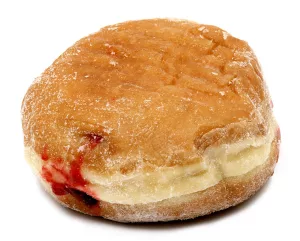
Physiotherapy for Lumbar Disc Herniation: A Basic Guide
Back pain is a common complaint that many people experience, but not all back pain is the same. One specific type of back injury that can cause significant discomfort is the lumbar disc herniation. If you’ve ever felt a sharp pain when moving or bending, or experienced persistent lower back pain, with or without pain into your legs, you might be dealing with this condition. Let’s dive into the details.
Anatomy of the lumbar disc
Imagine the discs in your spine as jelly-filled donuts. The outer part, known as the annulus fibrosus, is like the dough, while the inner part, the nucleus pulposus, is the jelly. A lumbar disc herniation occurs when this ‘jelly’ gets pushed out, much like when you squeeze a donut too hard. This can lead to pain, especially if it presses against nearby nerves.
 |  |
| Image via Wiki commons | Image via Injury Map |
Description of the Injury
Lumbar disc herniation can happen for a number of reasons, such as age-related disc degeneration, but most often result from fully flexing the spine, for either a repeated or prolonged periods of time, and typically while under compressive load. Keeping in mind the jelly donut analogy, sometimes these disc fragments can press on nearby nerve roots, leading to radicular pain (pain down the leg) or radiculopathy (altered strength, sensation or reflexes in the muscles fed by the specific nerve root). The most common regions for this to occur are the L4-5 and L5-S1 areas of the spine.
Key Symptoms
Disc herniations can manifest in various ways. Some people might only experience localized pain in the low back, while others might feel pain radiating into their lower leg. Some of the symptoms one can experience include:
- Lumbar Disc Herniation without Radiculopathy: Pain is localized to the low back, sometimes extending into the buttocks. There’s no weakness when testing muscle, and sensations and reflexes remain normal. Posture might change to relieve pain.
- Lumbar Disc Herniation with Radiculopathy: Pain can radiate into the lower leg. Weakness can be observed when testing muscle strength, and sensation and/or reflex’s can be affected.
In some instances people with disc herniation’s can develop bladder or bowel dysfunction, numbness and/or tingling in the groin (saddle anaesthesia), numbness and tingling in the arms and/or legs, or severe pain . If you are experiencing these symptoms you should seek immediate medical attention.
General Physiotherapy Treatment Approach
Treatment should start with a comprehensive assessment to determine the segment affected and positions that may aggravate or improve symptoms. After the thorough assessment is completed a treatment plan can be implemented that includes education, modalities, manual therapies and exercises.
Education focuses on proper posture, especially during everyday activities, to help in managing daily activities more with less discomfort. Modalities like heat, ice, and TENS are used to provide temporary pain relief while manual therapies, like traction, can help alleviate symptoms and potentially reduce the herniated material’s size. Finally, exercises are done to improve spinal range of motion and stability. It’s natural to experience some discomfort during movement and exercise, but it’s essential to avoid positions that worsen radicular symptoms.
Exercise Examples:
Some exercises that can implemented into the treatment plan include, but are not limited to:
- Postural awareness exercises.
- Lumbar spine range of motion.
- Lumbar stabilization exercises.
- Core stabilization exercises and pelvic movements.
Conclusion
Back pain can be debilitating, but understanding the cause and seeking the right treatment can make a world of difference.
If you’re in Edmonton and suspect you might have a lumbar disc herniation or any other back injury, don’t hesitate to reach out, we’re all about personalized care. Book today with Connect Physiotherapy & Exercise and let us help you on your path to recovery.
Remember, while knowledge is power, self-diagnosis and treatment can be risky. While this blog provides useful information, it’s essential to see a trained professional for proper diagnosis and management. Every person is unique, and so is their recovery journey.
References
Magee, D. J., Zachazewski, J. E., & Quillen, W. S. (2009). Pathology and Intervention in Musculoskeletal Rehabilitation (p. 435). St. Louis, MO: Saunders.
Kortelainen, P., Puranen, J., Koivisto, E., & Lähde, S. (1985). Symptoms and signs of sciatica and their relation to the localization of the lumbar disc herniation. Spine, 10(1), 88-92.
Postachinni, F., Caruso, I., Saraceni, V.M. (1999). Lumbar disc herniation: Conservative treatments. Slovenia: Springer-Verlang/Wien. (157-163)
Murphy, D., Hurwitz, E., & McGovern, E. (2009). A nonsurgical approach to the management of patients with lumbar radiculopathy secondary to herniated disk: a prospective observational cohort study with follow-up. Journal Of Manipulative & Physiological Therapeutics, 32(9), 723-733.
Polubinsky, R. L., Plos, J. M., Piper, T. J., & Nelson, J. A. (2010). Intervention strategies for functional and structural low back pain. Athletic Therapy Today, 15(6), 8-14.

